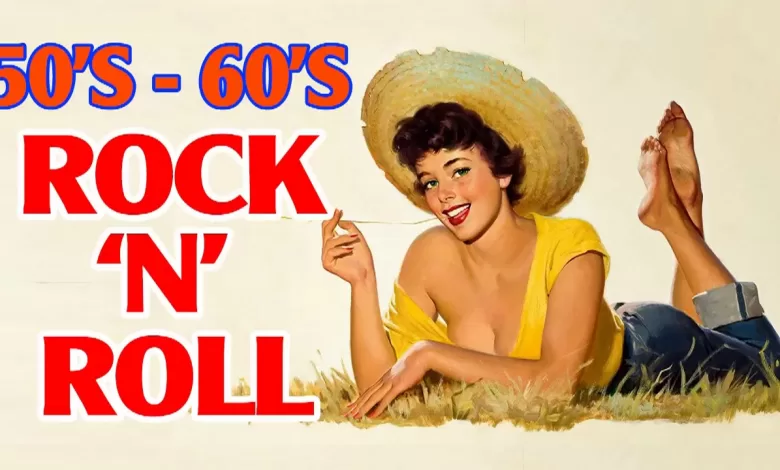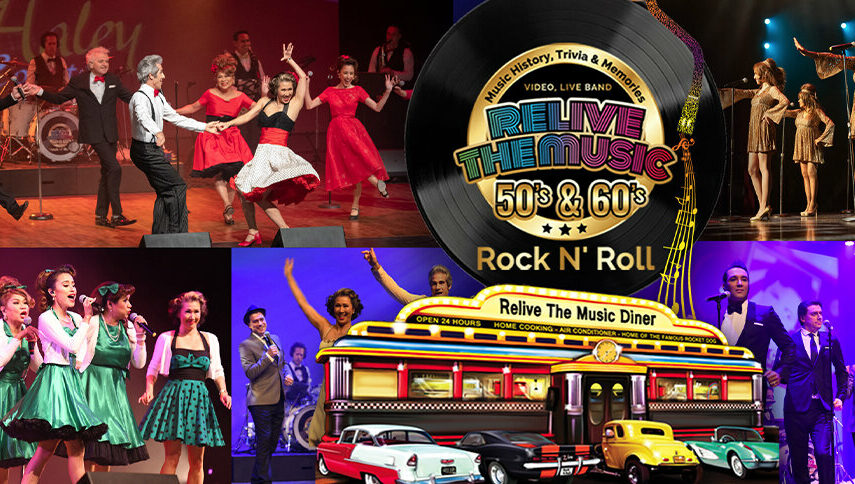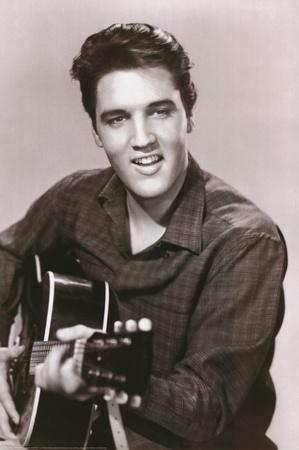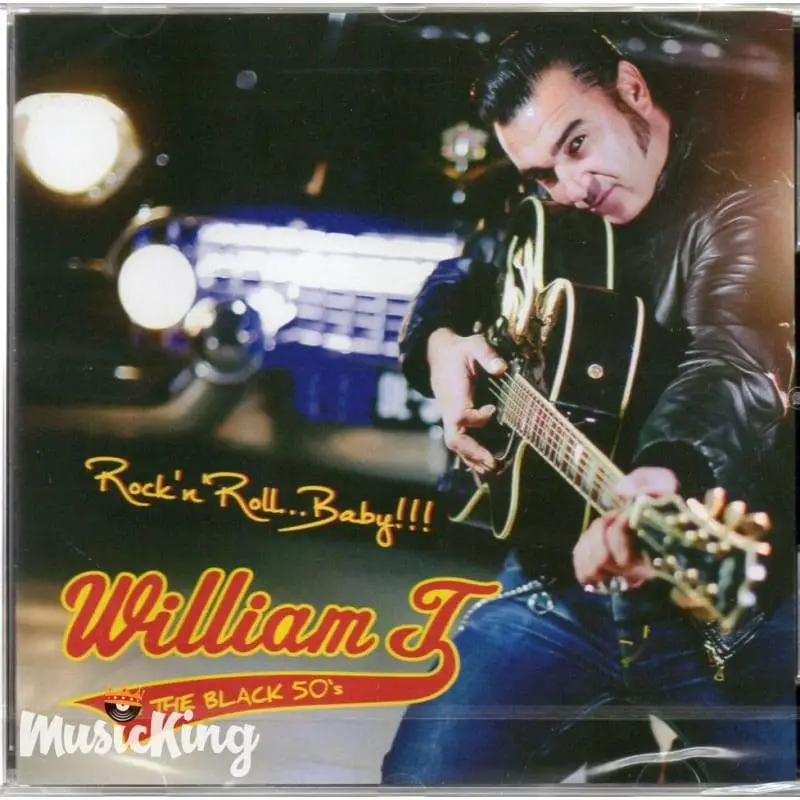Exploring the Golden Age of Music A Look into 50s Rock Music

The 1950s is often referred to as the Golden Age of music, and for good reason. This was a time where a new genre of music, known as rock and roll, emerged and took the world by storm. It was a decade filled with rebellious attitudes, energetic performances, and catchy tunes that continue to be popular even in modern times. The 50s also marked a shift in societal norms and cultural values, and 50s rock music played a significant role in shaping this change.
In this blog post, we will delve into the world of 50s rock music, exploring its evolution, influential artists, top hits, impact on society, defining characteristics, controversies, regional variations, and legacy in modern times.
The Evolution of 50s Rock Music
Rock and roll was born in the 1950s, but it didn’t happen overnight. It was a result of various musical influences and cultural shifts that had been brewing for years. In the early part of the decade, popular music was dominated by big band and swing music, catering to a more traditional audience. However, there was a growing interest in African American rhythm and blues (RB) music among young people.
RB and Country Influences
The roots of rock and roll can be traced back to African American musicians who combined elements of RB, gospel, and blues music to create a unique sound. Artists like Chuck Berry, Fats Domino, and Little Richard were amongst the first to popularize this new style of music. Their songs were characterized by upbeat rhythms, electric guitars, and lyrics that often reflected the struggles and experiences of African Americans at the time.
On the other hand, country music also played a vital role in the development of rock and roll. Artists like Elvis Presley and Jerry Lee Lewis drew inspiration from country music and infused it with the energy and attitude of RB, creating a style that was more acceptable to white audiences. This fusion of genres helped bridge the gap between different cultures and laid the foundation for the widespread popularity of rock and roll.
The Birth of Rock and Roll
The exact moment when rock and roll was born is debatable, but many historians point to the release of “Rocket 88” by Jackie Brenston and his Delta Cats in 1951 as the first true rock and roll song. It was a fast-paced, upbeat song that featured distorted electric guitar and a driving rhythm, setting the tone for what was to come.
However, it was in 1954 when Elvis Presley burst onto the scene with his debut single “That’s All Right” that the world truly took notice of this new genre. His electrifying performances and unique blend of country, RB, and gospel music captured the hearts of millions and marked the beginning of the rock and roll era.
Influential Artists of the 1950s
The 1950s saw the rise of many influential artists who shaped the sound and style of 50s rock music. These musicians pushed boundaries and challenged societal norms, leaving an indelible mark on music history.
Chuck Berry
One of the pioneers of rock and roll, Chuck Berry was a masterful guitarist and songwriter whose influence can still be felt in modern music. Not only did he popularize the use of electric guitar in rock and roll, but his lyrics also reflected the teenage culture of the time, making him relatable to young audiences. Songs like “Johnny B. Goode”, “Roll Over Beethoven”, and “Maybellene” are considered classics and have been covered by countless artists over the years.
Little Richard
Known for his flamboyant and energetic performances, Little Richard is widely regarded as one of the key figures in the development of rock and roll. With his powerful voice and wild stage presence, he captivated audiences and paved the way for future rock stars. His hits “Tutti Frutti”, “Long Tall Sally”, and “Good Golly Miss Molly” are still played and recognized today.
Elvis Presley
No list of influential 50s rock artists would be complete without “The King of Rock and Roll” himself. Elvis Presley’s impact on music and popular culture is immeasurable. He brought a sense of danger and rebellion to the genre, with his gyrating hips and rebellious image. Songs like “Hound Dog”, “Heartbreak Hotel”, and “Jailhouse Rock” solidified his status as a rock icon and continue to be celebrated by fans all over the world.
Top Hits of the 50s Rock Music Era
The 1950s saw an explosion of catchy and influential songs that defined the rock and roll era. Here are some of the top hits of the decade:
“Rock Around the Clock” by Bill Haley His Comets
This song, released in 1954, is often considered the anthem of the rock and roll era. Its infectious beat and energetic vocals made it an instant hit and launched Bill Haley His Comets to stardom.
“Hound Dog” by Elvis Presley
Originally recorded by Big Mama Thornton, Elvis’ version of “Hound Dog” became one of the biggest hits of the 50s. It showcases his raw vocals and rockabilly style, making it a defining song of the decade.
“Blue Suede Shoes” by Carl Perkins
Released in 1956, this song was a massive hit for Carl Perkins, and it has been covered by countless artists since. Its iconic opening guitar riff and relatable lyrics about a man’s love for his shoes struck a chord with audiences and solidified Perkins’ place in 50s rock music history.
“Johnny B. Goode” by Chuck Berry
Considered to be one of the greatest songs of all time, “Johnny B. Goode” is a high-energy rock and roll anthem that defined the sound of the 50s. Its catchy guitar riff and relatable lyrics about a young boy’s dream of becoming a rock star resonated with listeners and cemented Chuck Berry’s status as a rock and roll legend.
The Impact of 50s Rock Music on Society
The emergence of rock and roll in the 1950s had a significant impact on society, particularly on the younger generation. It brought about a shift in attitudes and values, challenging the traditional views of the time. Here are some ways in which 50s rock music influenced society:
Breaking Down Racial Barriers
During the 50s, America was still heavily segregated, and African Americans faced discrimination and prejudice in many areas of their lives. However, 50s rock music helped bridge the racial divide, bringing together both black and white audiences. It showed that music was a unifying force that could transcend societal boundaries and bring people together.
Challenging Gender Norms
Rock and roll also played a role in challenging traditional gender roles of the 1950s. Many female artists, such as Wanda Jackson and Brenda Lee, were able to achieve success in the male-dominated world of rock and roll. This helped pave the way for future female musicians and showed that women could be just as talented and influential as men in the music industry.
Sparking Controversy
With its rebellious attitude and suggestive lyrics, 50s rock music sparked controversy and outrage among more conservative members of society. Elvis Presley’s infamous hip-shaking performances, deemed too scandalous for television, caused a stir and even led to his music being banned in some places. However, this only added to the allure of rock and roll and made it even more appealing to young audiences.
The Rise of Rock and Roll in the 1950s
The 1950s saw an explosion of rock and roll on the airwaves, with many radio stations catering specifically to the genre. This new style of music quickly gained popularity among teenagers and young adults, who were drawn to its energetic rhythms and rebellious nature.
The Influence of Television
Television played a significant role in popularizing rock and roll in the 50s. Shows like “American Bandstand” and “The Ed Sullivan Show” featured performances by popular rock artists, exposing them to a larger audience. This helped propel the careers of many musicians and solidified rock and roll as a mainstream genre.
Record Sales
The rise of record sales in the 1950s also played a crucial role in the success of rock and roll. With the advent of vinyl records and jukeboxes, people could now listen to their favorite songs in the comfort of their own homes or at their local diner. This made it easier for rock and roll artists to reach a wider audience and contributed to the genre’s widespread popularity.
Notable Characteristics of 50s Rock Music
One of the defining characteristics of 50s rock music is its upbeat and energetic sound. It is often associated with rebellion, youth culture, and a carefree attitude. Some other notable characteristics include:
Distorted Electric Guitars
Electric guitars played a significant role in shaping the sound of 50s rock music. Artists like Chuck Berry, Bo Diddley, and Buddy Holly used this instrument to create catchy riffs and solos that became a staple of the genre. It gave rock and roll its distinctive sound and was one of the key elements that set it apart from other genres at the time.
Up-tempo Beats
Most 50s rock songs were characterized by fast-paced, up-tempo beats that encouraged dancing and movement. This was a stark contrast to the slower, more traditional music of previous decades and added to the rebellious nature of rock and roll.
Simple Song Structures
Many 50s rock songs followed a simple song structure with verses, choruses, and a bridge. This made them easy to remember and sing along to, making them popular amongst younger audiences.
The Role of Technology in Shaping 50s Rock Music
Advancements in technology had a significant impact on the development and success of 50s rock music. Here are some ways in which technology played a role:
Electric Instruments
The invention of electric instruments, particularly the guitar, revolutionized the sound of rock and roll. With its ability to produce louder and more distorted sounds, the electric guitar became one of the defining elements of the genre.
Amplifiers and Sound Systems
With the rise of large concerts and music events in the 1950s, the need for powerful amplifiers and sound systems became crucial. These advancements allowed artists to perform for larger crowds and created a more immersive experience for audiences.
Recording Techniques
The 1950s also saw advancements in recording techniques, allowing for cleaner and more defined sound quality. This was instrumental in making rock and roll records sound more polished and professional, contributing to their commercial success.
Controversies Surrounding 50s Rock Music
As with any new and influential movement, 50s rock music was not without its controversies. Its rebellious nature and suggestive lyrics often sparked outrage and criticism from more conservative members of society.
Promoting Immorality
Many critics believed that 50s rock music promoted immoral behavior, particularly among young people. The suggestive lyrics of songs like “Tutti Frutti” and “Jailhouse Rock” were deemed unacceptable by some, and there were fears that they would corrupt the younger generation.
Racial Tensions
While rock and roll brought together people of different races through music, it also highlighted the racial tensions of the time. Many white audiences were drawn to the music of African American artists, causing resentment and backlash from some members of the black community.
Challenge to Traditional Values
The rebellious attitude and carefree lifestyle promoted by 50s rock music challenged traditional values and societal norms. This caused concern among some parents and authorities who feared that the younger generation would be influenced by this new style of music.
Regional Variations in 50s Rock Music
Despite being a global phenomenon, 50s rock music had its own regional variations, with different countries and regions putting their own spin on the genre.
British Rock and Roll
In the UK, rock and roll was heavily influenced by skiffle, a type of folk music that incorporated elements of blues and jazz. Artists like Lonnie Donegan and Tommy Steele helped popularize this version of rock and roll, which often featured acoustic instruments and simpler arrangements.
Latin Rock and Roll
Latin-inspired rock and roll, also known as “rock en español”, emerged in South America and Mexico during the 1950s. It combined elements of traditional Latin music with rock and roll, creating a unique sound that appealed to Spanish-speaking audiences.
Surf Music
Surf music was a subgenre of 50s rock music that originated in California. It was heavily influenced by surf culture and featured energetic guitar-driven songs that often had a beach or surfing theme. The Beach Boys, Jan and Dean, and Dick Dale were amongst the most notable artists of this genre.
Exploring the Golden Age of Music A Look into 1960s Rock and Roll
Legacy of 50s Rock Music in Modern Times
The impact of 50s rock music can still be seen and felt in modern times. Its influence can be heard in various genres, and many of the songs from this era continue to be popular today.
Influence on Other Genres
With its energetic rhythms and catchy melodies, 50s rock music inspired the development of other genres such as punk, heavy metal, and alternative rock. These genres often pay homage to the pioneers of 50s rock music and incorporate elements of their sound into their own music.
Continuous Popularity
Many of the top hits from the 1950s continue to be played on the radio and featured in movies and television shows. Artists like Elvis Presley and Chuck Berry are still celebrated and idolized by fans all over the world, proving that the music from this era has stood the test of time.
Revival of Interest
In recent years, there has been a resurgence of interest in 50s rock music, with many young people discovering and appreciating the songs and artists from this era. This renewed interest has led to tribute bands, cover songs, and even themed events that celebrate the music and culture of the 1950s.
Conclusion
The 1950s was a decade of change and innovation, and the emergence of rock and roll played a significant role in shaping this transformation. It brought together different cultures, challenged societal norms, and created a new sound that continues to be loved and celebrated today.
50s rock music has left a lasting legacy on the music industry, influencing future generations of musicians and captivating audiences with its infectious energy and rebellious attitude. As we look back at this Golden Age of music, we can appreciate the impact it had on society and understand why it continues to hold a special place in the hearts of people all over the world.
Discover the Best 50’s Rock Music A Nostalgic Journey Through Time













